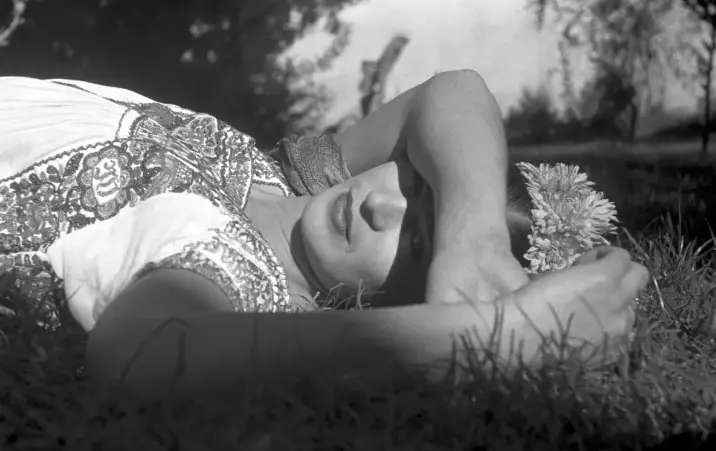By LINDSEY BAHR – Frida Kahlo used her experiences to create her art. In keeping with that spirit, Kahlo’s personal writings serve to tell her life story in a new documentary.
Filmmaker Carla Gutierrez combines first-person narration with archival footage and interpretive animation of Kahlo’s work in the documentary “Frida,” currently available on Prime Video in the U.S. and opening in theaters in Mexico on May 9.
Gutierrez, who was born in Peru and moved to the U.S. as a teenager, recalls the first time she connected with Kahlo’s paintings was in college.
“I was a new immigrant and there was a specific painting that really introduced me to her voice where she appears as an artist on the U.S.-Mexico border,” Gutierrez said in an interview with The Associated Press earlier this year. “I saw my experience of that moment really reflected in the painting. Then it became part of my life.”
Gutierrez was an editor and was happy with that path in film. She worked on significant projects like “RBG” and “Julia,” which allowed her to be intimately involved creatively. But when a director friend whispered Kahlo’s name to her, she returned to her college books. Within hours she was making plans to direct.
“I feel like this story really told me I needed to step up and direct it,” she said. “I realized she could tell a lot of her own story and I felt like it hadn’t been done yet. I hope it’s a new way to get into her world, her mind and her heart and really understand the art in a more intimate and raw way.”
Kahlo did not give many interviews during her lifetime, Gutiérrez said, but she wrote very intimate and personal letters. The filmmaker was struck by her sense of humor, her sarcasm and irony, as well as “how explicit she was about her opinions.”
“It’s like a messy confidence and a messy feminism, in a way,” she said.
The film crew had to search museums in different parts of the world to find the letters they would compile to create a complete picture of Kahlo, including the Museo Frida Kahlo in Mexico City, the National Museum of Women in the Arts in Washington (where correspondence with her mother was located) and the Museo de Filatelia in Oaxaca, where they found her letters to her doctor on everything from her complex marriage to her miscarriage.
One of the most important creative decisions was to animate Kahlo’s art, which has proved a bit divisive since the film premiered at the Sundance Film Festival earlier this year. Some love it, others are unconvinced. But it was part of the vision for the film from its early stages. The hope, Gutierrez said, was to transport audiences from the real world to Kahlo’s inner world.
“I always thought about her heart and her veins, moving from her hands to the canvas,” he said. “We wanted to be very respectful of the paintings, but at the same time introduce lyrical animation so it felt like we were immersing ourselves in her real feelings and heart.”
Gutierrez is especially proud that her collaborators are mostly Latino and bilingual. Composer Victor Hernandez Stumpfhauser is Mexican. The animation team is made up of Mexican artists and includes art director Renata Galindo.
“Injecting this cultural understanding of the country into the film is fantastic,” said Gutierrez.

